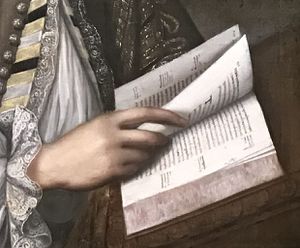Difference between revisions of "Searching and Browsing"
| Line 21: | Line 21: | ||
To see a list of the ''subjects'' of which individuals have collected books, use the property [https://bookowners.online/Property:Subject Subject]. | To see a list of the ''subjects'' of which individuals have collected books, use the property [https://bookowners.online/Property:Subject Subject]. | ||
| − | Where entries contain references to names which also have their own pages in the database, '' | + | Where entries contain references to names which also have their own pages in the database, ''crossreference'' links have been added to move easily between entries. |
===Navigation=== | ===Navigation=== | ||
Revision as of 13:36, 10 August 2020
Book Owners Online is built using the software which underpins Wikipedia, and works in broadly similar ways. Furthermore, each entry has been marked up in a semi-structured, semantic manner, allowing for more complex searches of entries and the ability to browse the directory in a number of different ways.
Searching
Simple searches can be undertaken by using the search box, which can be found in the top right corner of every page.
Semantic Search
Advanced users may construct queries of the BOO dataset using the Semantic Search tool. Useful guidance for constructing a query can be found here.
Browsing
Semantic markup also allows users to browse entries in the database by way of Categories and Properties.
Categories flag each entry with a number headings reflecting the background of the owner (academic, aristocracy, schoolmaster, etc), kinds of ownership marking (e.g. armorial stamps, bookplates), and ways in which libraries were bequeathed or dispersed (e.g. given to parishes or institutions, sold by auction).
To see one alphabetical list of all the entries in the database, use the category All Owners.
Additionally, each entry include has been marked up to capture a number of properties, such as names, dates of birth and death, occupations, and locations. The values of these properties has been standardised.
For example, to see a standardised list of the languages in which individuals have collected books, use the property Language.
To see a list of the subjects of which individuals have collected books, use the property Subject.
Where entries contain references to names which also have their own pages in the database, crossreference links have been added to move easily between entries.
The Navigation button on the top left of every page includes a number of useful links, to the alphabetical list of all owners, to the list of categories, and to the list of properties.
The Browse Properties link is particularly useful for browsing the entries in the directory. clicking this link will take the user to a special page that lists all properties embedded in that entry and all the values associated with them.
The magnifying glass button next to the values can be clicked to take the user to a list of entries all containing that value for that property.
